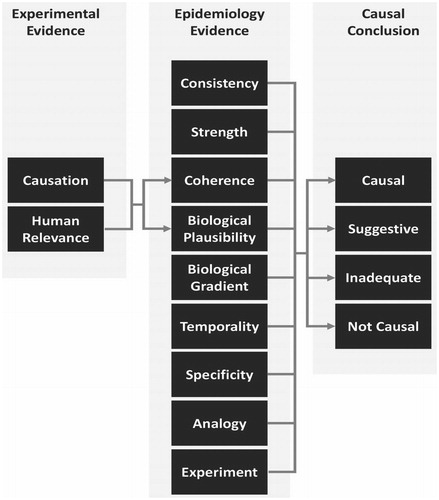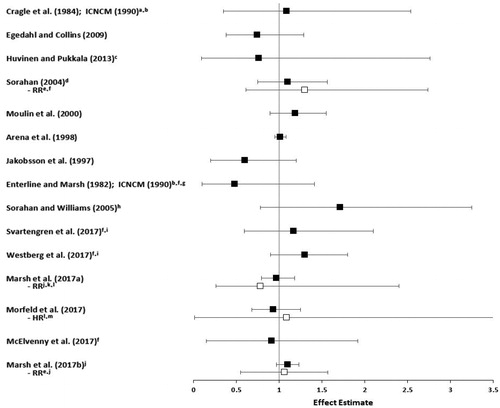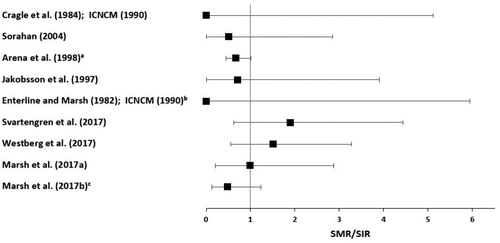Figures & data
Table 1. Criteria for evaluating causation and the human relevance of experimental studies.
Table 2. Confidence in the biological plausibility of a health outcome in humans based on experimental studies.
Table 3. Modified Bradford Hill aspects for evidence integration.
Figure 1. The experimental and epidemiology evidence are integrated together, using modified Bradford Hill aspects to aid in judgment of causality, with experimental evidence informing the aspects of coherence and biological plausibility. A four-tiered framework for causality is used to reach a causal conclusion. Adapted from Goodman et al. (Citation2020).

Table 4. Criteria for reaching conclusions about causality.
Table 5. Study quality/risk of bias ratings for cohort studies evaluating metallic nickel exposure and respiratory cancer outcomes.
Table 6. Results of metallic nickel and respiratory cancer cohort studies.
Table 7. Study quality/risk of bias ratings for experimental animal studies evaluating metallic nickel exposure and respiratory cancer outcomes.
Figure 2. Effect estimates are SMRs or SIRs for each study (filled squares). If a study also reported an RR or HR with adjustment for important potential confounders, those are presented directly below the SMR or SIR for that study (unfilled squares). (a) Workers with ≥15 years since first exposure and ≥15 years of employment. (b) 95% confidence interval of effect estimate was calculated from the number of observed and expected deaths based on Fisher's exact test, as it was not reported by the study authors. (c) >5 years of employment, stainless steel melting. (d) ≥30 years since hire. (e) Adjusted for smoking. (f) ≥20 years of employment. (g) Hired in 1947 or later, with ≥15 years since first exposure. (h) Pellet and powder production. (i) Latency ≥20 years and >20 years of employment. (j) Long-term (≥1 year) workers. (k) Cumulative exposure ≥0.085 mg/m3-years. (l) Adjusted for occupational co-exposures. (m) Cumulative exposure per 1 mg/m3-years increment. HR: hazard ratio; RR: relative risk; SIR: standardized incidence ratio; SMR: standardized mortality ratio.

Figure 3. (a) White males. (b) Hired in 1947 or later (alloy production). (c) Long-term (≥1 year) workers. SIR: standardized incidence ratio; SMR: standardized mortality ratio.

Figure 4. (a) White males. (b) Long-term (≥1 year) workers. SIR: standardized incidence ratio; SMR: standardized mortality ratio.

Table 8. Results of experimental animal studies of metallic nickel respiratory carcinogenicity.
Table 9. Study quality/risk of bias ratings for in vitro studies evaluating metallic nickel genotoxicity.
Table 10. Results of in vitro mechanistic studies evaluating metallic nickel genotoxicity.
